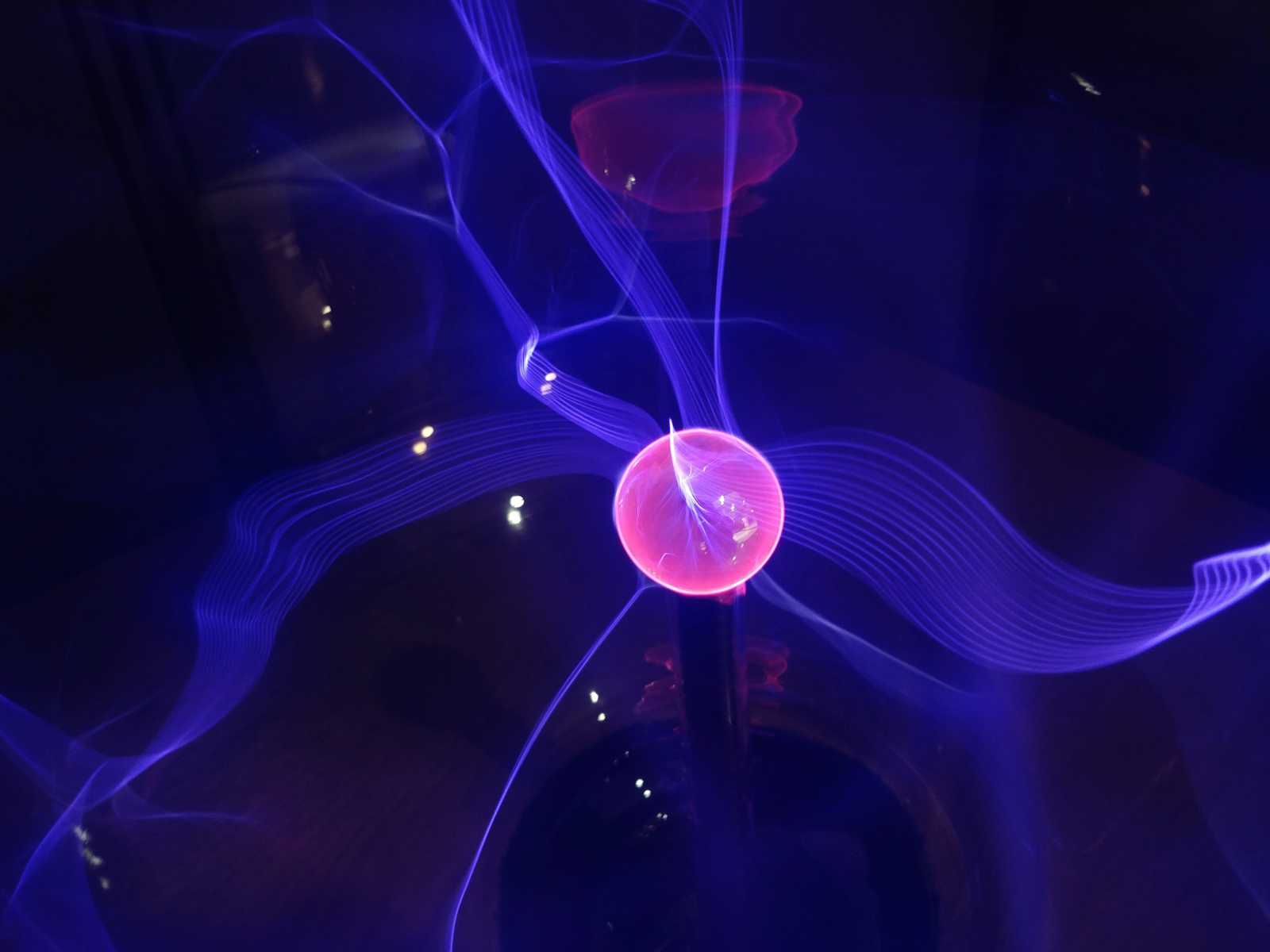Quantum Computing: The Next Frontier of Computing Power
 Naman Kumar
Naman Kumar
If you think today's computers are impressive, just wait until quantum computing goes mainstream. This revolutionary new approach to processing information has the potential to make even the most powerful supercomputers look like toys. Quantum computers leverage the mind-bending principles of quantum mechanics to exponentially increase their computing power and memory capacity. While still in the early stages, they represent a technological frontier that might eventually change our world.
What is Quantum Computing?
At a very basic level, the computers we use today process information in binary bits that can either be a 0 or a 1. These bits are the fundamental units of data that allow computers to encode information and perform operations according to the laws of classical physics and boolean logic.
Below is a basic understanding of how the binary bits 0 and 1 are processed in assembly language for 8086 microprocessor.
section .data
binary_input db '10101010',0 ; Binary input stream
result_msg db 'Processed result: ', 0
newline db 10, 0 ; Newline character
section .text
global _start
_start:
mov esi, binary_input ; Load address of binary input
xor ebx, ebx ; Clear EBX register to use it as a counter
process_loop:
mov al, byte [esi + ebx] ; Load a byte from binary_input into AL
cmp al, 0 ; Compare AL with 0
je process_zero ; If it's 0, jump to process_zero
jmp process_one ; Otherwise, jump to process_one
process_zero:
mov eax, 4 ; Syscall number for sys_write
mov ebx, 1 ; File descriptor 1 (stdout)
mov ecx, binary_input ; Address of '0' character
add ecx, ebx ; Move to next character
mov edx, 1 ; Number of bytes to write
int 0x80 ; Invoke syscall
jmp next_bit ; Jump to process the next bit
process_one:
mov eax, 4 ; Syscall number for sys_write
mov ebx, 1 ; File descriptor 1 (stdout)
mov ecx, binary_input ; Address of '1' character
add ecx, ebx ; Move to next character
mov edx, 1 ; Number of bytes to write
int 0x80 ; Invoke syscall
jmp next_bit ; Jump to process the next bit
next_bit:
inc ebx ; Increment the counter
cmp byte [esi + ebx], 0 ; Check if we've reached the end of the string
jne process_loop ; If not, continue processing
; If we've reached the end of the string, print a newline and exit
mov eax, 4 ; Syscall number for sys_write
mov ebx, 1 ; File descriptor 1 (stdout)
mov ecx, newline ; Address of newline character
mov edx, 1 ; Number of bytes to write
int 0x80 ; Invoke syscall
mov eax, 1 ; Syscall number for sys_exit
xor ebx, ebx ; Exit code 0
int 0x80 ; Invoke syscall
Quantum computers, on the other hand, utilize quantum bits or "qubits" that can exist as both 0s and 1s simultaneously. This isn't just some abstract computer science theory, but a real phenomenon allowed by the quantum principle of superposition. Rather than just holding one state, each qubit represents a complex vector that can encode both 0 and 1 at the same time through a behavior unique to quantum physics.
Here is a demonstration of a quantum circuit to perform Deutsch-Josza algorithm in QASM:
OPENQASM 2.0;
include "qelib1.inc";
qreg q[4];
creg c[1];
x q[3];
h q[0];
h q[1];
h q[2];
h q[3];
cx q[0], q[3]; // Controlled-NOT gate between qubit 0 and qubit 3
cx q[1], q[3]; // Controlled-NOT gate between qubit 1 and qubit 3
cx q[2], q[3]; // Controlled-NOT gate between qubit 2 and qubit 3
h q[0];
h q[1];
h q[2];
measure q[0] -> c[0];
This ability to hold multiple states in a single unit of data gives quantum computers access to a large amount of computing power and memory capacity. In fact, a quantum computer with just 300 qubits would have more possible states than the number of atoms in the observable universe! It's a fascinating preview of the exponential performance gains quantum computing could provide over even the most advanced supercomputers.
How Quantum Computers Work?
So how exactly do quantum computers use those incredible qubit properties? The secret lies in two key quantum phenomena: the theory of superposition and quantum entanglement.
Above we saw the basic implementation of the superposition theory and how it allows qubits to represent multiple states simultaneously. Quantum entanglement is another quantum behavior where the state of one particle becomes inseparably linked to others, even when physically separated by incredible distances. By taking advantage of these effects, sets of qubits can be operated on and measured together as part of a quantum calculation.
Through a process known as quantum parallelism, these entangled qubits effectively allow quantum computers to consider nearly all possible solutions to a computational problem all at once. It's like being able to explore every possible path through a dense and clustered maze simultaneously rather than having to carefully follow down each branch one-by-one as classical computers do.
This unique capability to process such large amounts of inputs at the same time is what gives quantum computers their tremendous potential for solving certain problems with way more efficiency than the fastest supercomputers. They take a fundamentally different computational approach that exponentially reduces the time required for some calculations.
The Challenges of Building Quantum Computers:
Of course, if quantum computing was easy, we'd all be using these hyper-powerful machines already. While incredibly powerful in theory, quantum computers face a lot practical challenges in implementing those capabilities.
For one, qubits are extremely fragile. They can only maintain their special quantum properties for an extremely brief period before decoherence sets in and they start behaving like normal classical bits. To function correctly, qubits must operate under highly controlled conditions with a near-perfect vacuum and temperatures just a fraction of a degree above absolute zero, colder than the depths of outer space.
Even the smallest environmental disturbance like stray radiation, electromagnetic fields, or vibrations can completely destroy a quantum computation and destroy the precious quantum states. This makes qubits highly error prone. Just imagine how difficult it is to keep just one qubit stable, let alone hundreds or thousands required for a functional, powerful quantum machine.
As more qubits get added to increase computing power, the challenges increase exponentially. Finding ways to protect large arrays of qubits from noise and errors while precisely controlling their interactions is one of the biggest challenges holding back the development of large-scale quantum computers.
The Quantum Computing Race
Despite these immense scientific and engineering obstacles, some of the biggest names in the tech industry are investing billions of dollars into a high-stakes race to build the first commercially available quantum computers. Google, IBM, Microsoft, Intel, Amazon, and well-funded startups like IonQ, Rigetti Computing, and others are all trying hard for an early lead in an emerging "quantum age".
So far, they've achieved some notable milestones like quantum supremacy, the point where a quantum computer can outperform even the largest classical supercomputers on specific tasks. In 2019, Google claimed its 54-qubit Sycamore processor carried out a calculation that would be essentially impossible for even the most powerful classical supercomputer to complete. IBM has also reached quantum supremacy milestones.
However, these demonstrations have been for highly specialized algorithms. We're still years or even decades away from achieving the dream of fault-tolerant, general-purpose quantum computers that are more powerful than classical machines across a wide range of real-world applications.
Potential Applications of Quantum Computing
So what exactly will quantum computing be useful for, once we manage to overcome those technical hurdles? The applications enabled by these machines could be truly revolutionary across multiple sectors.
One of the most anticipated applications is using quantum computers to simulate chemistry, material science, nanotechnology, and quantum physics itself all the way down at the molecular level. By exploring more quantum effects, these simulations could potentially reveal new pathways for drug discovery, catalysts, more efficient solar cells or batteries, new materials with amazing properties like room temperature superconductors, and much more.
The field of quantum cryptography and cybersecurity may also be revolutionized. While today's encryption methods could potentially be broken by quantum computers through an algorithm like "Shor's", new quantum-secure communication protocols could enable unbreakable encryption by taking advantage of the laws of quantum mechanics in ways classical computers simply cannot.
Finally, quantum computing may even help advance our fundamental understanding of physics and the quantum nature of the universe itself, from exploring strange quantum phenomena like entanglement to simulating new theories of quantum gravity. Who knows what mind-blowing scientific breakthroughs they could one day unlock?
The Quantum Future
Few technologies have the potential to be as disruptive as quantum computing. It quite literally represents the next frontier for how we process information and explore the computational boundaries of what is possible.
Of course, the path to building useful, scalable quantum computing is still unclear with many scientific and technological challenges that will take years if not decades to overcome. Finding ways to reliably construct large-scale fault-tolerant quantum computers while protecting delicate qubits from errors is a truly a enormous task for engineers, physicists, and computer scientists.
And even once we've mastered the fundamentals, there's so much we still don't know about how to optimally utilize and apply this fundamentally new computing paradigm. New algorithms, applications, and programming models will need to be discovered. Just as with classical computers, the most revolutionary breakthroughs and use cases for this technology may end up being things we can't yet predict.
But if the remarkable progress already made over the past couple decades is any indication, quantum computing may spark a second computing revolution that fundamentally reshapes the entire industries while giving humanity deeper insights into the nature of our universe.
No matter what incredible breakthroughs lie ahead, one thing is clear: "We've only just begun to scratch the surface of quantum computing's vast potential. The frontier of what is computationally possible is about to be redefined."
Subscribe to my newsletter
Read articles from Naman Kumar directly inside your inbox. Subscribe to the newsletter, and don't miss out.
Written by

Naman Kumar
Naman Kumar
Hey i'm Naman. I am an AI enthusiast and a nerd about quantum physics and quantum computing.